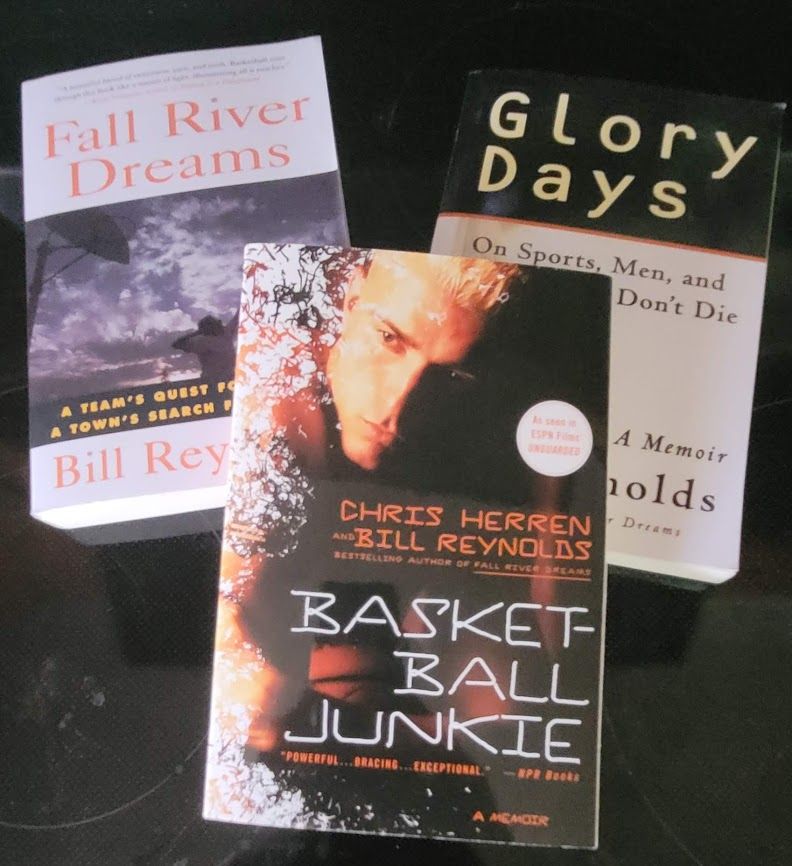Bill Reynolds: One of a kind
It is only appropriate that I publish this on Saturday, the same day Bill Reynolds' popular column "For What It's Worth" would come out.

It is only appropriate that I write this story on Saturday. Growing up, and through my adult years, one of the few constants in my life was looking forward to Saturday mornings and picking up the Providence Journal, fumbling through the paper to get to the sports section, and finding Bill Reynold’s column “For What It’s Worth.”
His column has been often imitated, but never duplicated. I even tried doing it for a time when I was freelancing. The column wasn’t your typical column about a singular current sporting event. Instead, it was a series of bullet points covering the broad spectrum of sporting, and life, events - one sentence at a time. Heck, come to think of it, Reynolds may have been doing tweets way before the invention of Twitter.
You were just as likely to see something about something the governor of Rhode Island said as you were to read about something Tom Brady did. Reynolds would often make fun of his out-of-touchness with the current pop culture - something many of us could relate to. He would often address his readers and his friends as "Bunky."
It was a sad day when Reynolds, a lifelong Rhode Islander, announced in 2021, that after nearly 40 years with the Journal, that he was retiring completely. It was an even sadder day, on Thursday of this past week, when news broke that Bill Reynolds had passed away at the age of 78. I found out as I was driving, and it hit me so hard I almost had to pull off to the side of the road. The only other time that had happened to me was when I heard on the radio that Princess Diana had died.
To say Reynolds is a legend of Rhode Island sports journalism doesn’t do it justice. Providence has always played the role of the younger step-sister of Boston, but Reynolds chose to stay in Rhode Island for his entire journalistic career. He could have gone anywhere in the country. He was that good, but he chose to stay in the tiny little state he loved.
I saw Reynolds at several high school sporting events growing up in the 80’s. I never got the chance to meet him, but he always caught my eye. He was tall. He was actually a standout basketball player at Brown in the 1960’s. But he had this air about him. Much like you know something big, weatherwise, is about to happen if the Weather Channel’s Jim Cantore comes to town, the same was true if Bill Reynolds showed up at an event.
As an aspiring sports journalist, I was often more intrigued watching Reynolds rather than the games. He would walk around casually, mingling with the players and coaches, with his tiny spiral notebook in his hand. He was a throwback to the old-fashioned reporters who would wear fedoras and smoke cigarettes while typing away on their typewriters.
Reynolds also had a talent as a columnist not to report on the minutiae of game details. Anyone could do that. As a matter of fact, that is what I did as a high school statistician. No, he would find the story within the story within the story. He would dig and dig until he found that story that would be unique and would resonate with his readers.
The best example of this was in 1992 when he followed a Durfee High School basketball team around for a full season. The result would be a book titled “Fall River Dreams.” The book took on a life of its own when Reynolds focused on the team’s star, Chris Herren. He focused on the pressures put on Herren to be the next great player in the Durfee dynasty. Herren’s older brother had been a Durfee legend. Reynolds would be forever linked with Herren as Herren’s adult years spiraled out of control due to heroin addiction. The result of that ongoing relationship resulted in another book, titled “Basketball Junkie.”
Throughout it all, you could tell Reynolds cared about Herren. In his latter book, Reynolds related stories about how Herren would just show up at the Providence Journal building and sit by Reynolds’ desk and chit chat if Herren ever needed someone to talk to. It showed the human side of Reynolds. Athletes were not just statues to Reynolds, they were real people, with mothers, wives, and children.
Reynolds was a mainstay at Providence College Friars basketball games. He could always be seen sitting at the press table. He was hard to miss, again with his tall stature, as well as his full head of increasingly gray hair. Despite the gray hair, Reynolds still seemed youthful, as if sports were his Fountain of Youth. It was his days at the old Providence Civic Center that cemented his place as one of the top chroniclers of the heyday of Big East basketball. Watch any documentary of the college days of Patrick Ewing, Derrick Coleman, Chris Mullin, Ray Allen, or Sherman Douglas and you would almost most assuredly see Reynolds being interviewed.
It was during these days that Reynolds grew a friendship with then PC coach Rick Pitino. The 1987 Friars would make a shocking run to the Final Four. Reynolds would follow Pitino’s turbulent career to the pros, back to college, back to the pros, and, ultimately, back to college. Reynolds would write a book with Pitino, “Born to Coach: A Season with the New York Knicks.”
Reynolds would go on to write twelve books in addition to his full-time job as a columnist for the Providence Journal. He was part of a dream team of writers for the Journal, which had him covering the Big East and the Celtics, Jim Donaldson covering the Patriots, Art Martone and Sean McAdam covering the Red Sox, and Joe McDonald covering the Bruins.
The loss of Reynolds affects generations of writers from the local area who were inspired by his writing and his columns. It is said way too often, but rarely true, but Rhode Islanders will never see another journalist the likes of Bill Reynolds.
You will be missed, Bunky.

